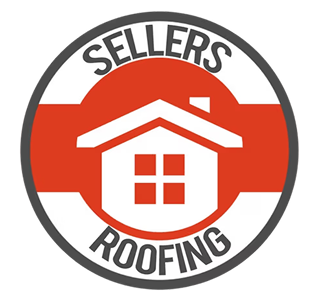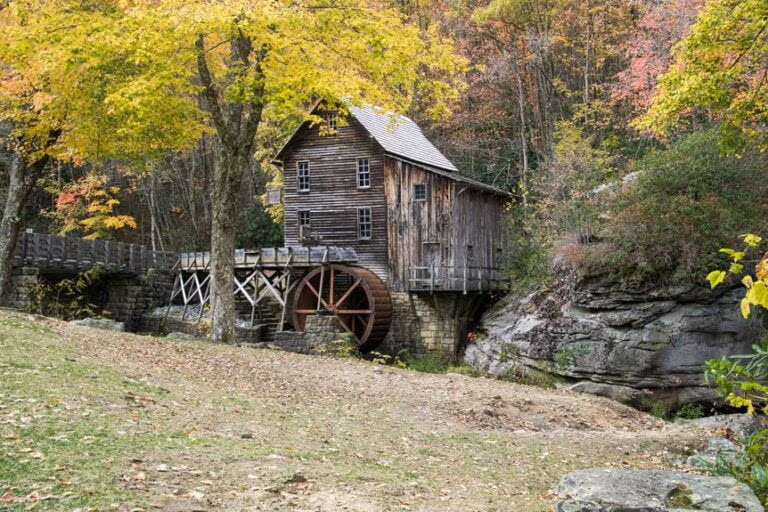Dormer roofs are architectural elements designed to increase the usable space beneath a roof and enhance natural light. Among their types, gabled dormers feature a classic triangular structure, adding volume and improving ventilation. Hipped dormers, with slopes on all sides, offer excellent wind resistance and a historical aesthetic. Shed dormers, characterized by a single downward sloping plane, expand headroom and maximize space. Eyebrow dormers boast a low, arching profile that enhances customization, while flat dormers offer a practical, space-maximizing option with a horizontal or slightly pitched roof. Each type supports different architectural expressions and practical applications, inviting further exploration into their specific benefits and suitable applications.
Key Takeaways
- Gabled dormer roofs feature a classic triangular structure, enhancing both exterior facade and interior volume.
- Hipped dormer roofs have slopes on all sides, providing excellent wind resistance and even weight distribution.
- Shed dormer roofs offer a single flat plane that increases space, natural light, and headroom.
- Eyebrow dormer roofs are known for their low, arching profiles that integrate smoothly with the roofline.
- Flat dormer roofs are horizontal or slightly pitched, maximizing interior space while simplifying the construction process.
Gabled Dormer Roofs
What distinguishes a gabled dormer roof is its classic triangular structure, characterized by two sloping sides that meet at a central ridge, creating a peak that is both aesthetically pleasing and functional for additional attic space and ventilation. This quintessential gable dormer design not only enhances the external facade of a building but also maximizes the interior volume, offering a liberating sense of space and freedom within the structure.
In gable roof construction, precision and expertise are paramount. The rafters, which form the sloping sides, must be meticulously measured and cut to make certain they align perfectly at the ridge. This construction method helps in effectively shedding water and snow, thereby safeguarding the integrity of the building. The design also allows for ample natural light and air to permeate the upper levels of the home, making the space more livable and reducing the reliance on artificial heating and cooling solutions.
Furthermore, the adaptability of the gable dormer allows it to blend with various architectural styles, from traditional to contemporary, providing architects and builders the freedom to innovate while respecting structural necessities and aesthetics. This versatility makes the gable dormer a lasting favorite in residential architecture.
Hipped Dormer Roofs
While gabled dormer roofs are celebrated for their traditional appeal and functionality, hipped dormer roofs offer a distinct architectural alternative that enhances both the aesthetic and structural aspects of a building. Hipped dormer roofs, characterized by slopes on all sides that join at the top, not only distribute weight more evenly but also provide excellent resistance to wind. This makes them particularly suitable for regions with harsh weather conditions.
Hipped dormer roofs have a historical significance that traces back to French architectural styles, where they were often used to add natural light and headspace without compromising the integrity of the structure. In modern adaptations, these roofs are seen blending seamlessly with various architectural styles, from quaint cottages to contemporary homes.
Selecting the right roofing materials and insulating methods are vital for maximizing the efficiency and longevity of hipped dormer roofs. Here is a brief overview of some commonly used materials and methods:
| Material Type | Benefits | Recommended Use |
|---|---|---|
| Asphalt Shingles | Cost-effective, durable | Standard residential buildings |
| Slate | Long lifespan, fireproof | High-end residences |
| Spray Foam | Superior insulation, airtight | Energy-efficient homes |
Incorporating these elements ensures that hipped dormer roofs not only meet aesthetic demands but also adhere to modern performance standards, making them a preferred choice for new constructions and renovations alike.
Shed Dormer Roofs
Shed dormer roofs, characterized by a single flat plane that slopes downward at an angle, are often implemented to increase the usable space beneath the roof and enhance natural light intake. This type of dormer is particularly popular in designs where maximizing interior volume is pivotal, offering numerous dormer roof benefits such as expanded headroom and potential for additional windows. The simplicity of shed dormer design is one of its most appealing aspects, providing an unobtrusive addition to a variety of architectural styles while promoting a sense of openness and freedom within the structure.
The structural requirements for shed dormers involve careful consideration of load distribution and waterproofing. The angle of the roof is typically less steep than the main roof, which necessitates precise calculations to guarantee adequate drainage and prevent water pooling, a key aspect in maintaining the integrity of the roofing system. Additionally, the integration of shed dormers must be handled with an eye towards enhancing the overall aesthetic and functional value of the building, aligning with both practical and stylistic objectives.
Architects and builders favor shed dormer roofs for their versatility in design and the practical advantages they offer, making them a preferred choice in residential construction projects aimed at creating spacious and light-filled environments.
Eyebrow Dormer Roofs
Eyebrow dormer roofs, distinguished by their low, arching profiles that mimic the curve of an eyebrow, offer a distinctive architectural element that blends seamlessly with the existing roofline. These structures not only enhance the aesthetic appeal of a building but also introduce natural light and additional headspace into upper-level rooms. Eyebrow dormer styles are particularly favored in designs that emphasize organic, flowing lines rather than sharp angles.
Here are the unique features that set eyebrow dormer roofs apart:
- Integration with Roofline: Unlike more protrusive dormers, eyebrow dormers involve a construction technique that requires careful sculpting of the roof sheathing to create a smooth, continuous curve that does not interrupt the original lines of the roof.
- Customization and Aesthetics: Eyebrow dormer roofs can be customized with various roofing materials and window types, allowing them to match or accentuate the main roof. This flexibility makes them ideal for enhancing the character and style of both historical and modern homes.
- Functional Benefits: Beyond their aesthetic value, these dormers provide practical advantages such as improved ventilation and emergency egress, making upper floors more comfortable and safer.
Each of these elements contributes to the freedom of design and expression, appealing to those who value both form and function in their living spaces.
Flat Dormer Roofs
Flat dormer roofs, characterized by their horizontal or slightly pitched structures, are commonly used to maximize interior space and simplify the construction process. These roofs blend seamlessly with a building's main roof, providing ample headroom and usable interior space, which is particularly advantageous in attic conversions. From a construction perspective, flat dormers are less intricate to frame than many other dormer types, which can lead to reduced labor costs and shorter project timelines.
The choice of roofing materials for flat dormers is vital to guarantee durability and energy efficiency. Typically, builders opt for materials that offer a high degree of waterproofing to prevent leaks, as the low pitch of flat roofs does not support rapid water runoff. Membrane roofing materials, such as EPDM or TPO, are popular options due to their strong, seamless coverage and long lifespan. These materials also contribute to energy efficiency by reflecting sunlight and reducing heat absorption, which can greatly lower cooling costs in warmer climates.
Implementing flat dormer roofs requires careful consideration of both aesthetic alignment with the main building and adherence to local building codes. Optimum design and material selection, coupled with professional installation, are crucial to harness the benefits of energy efficiency and space maximization inherent in this roof type.
Segmental Dormer Roofs
Segmental dormer roofs, characterized by their arched roof structure, offer distinctive design and aesthetic appeal. These dormers employ specific construction techniques that guarantee both durability and visual harmony with the main roof. To fully appreciate their utility, it is essential to understand their ideal applications in various architectural contexts.
Design and Aesthetics
Curved gracefully, the design of segmental dormer roofs combines aesthetic appeal with functional space maximization, characteristic of its arched structure. This type of dormer is not only a structural addition but also a significant decorative element that enhances the overall architectural expression of a building. The unique curvature offers a distinct contrast to the straight lines typically found in roof designs, providing a softening effect that can complement a variety of architectural styles.
When considering the design and aesthetics of segmental dormer roofs, several elements are essential:
- Color Schemes and Window Treatments: The choice of color can either accentuate the unique arch of the dormer or blend seamlessly with the main roof. Strategic use of window treatments adds to the visual impact while also offering privacy and light control.
- Furniture Placement and Lighting Options: Inside, the curvature of the dormer ceiling can influence furniture placement and lighting. Optimal arrangement allows for maximum usability of the space, while creative lighting solutions can highlight the architectural features.
- Material Selection: The materials used for the dormer should complement the main building's exterior while also providing durability and weather resistance. The right choice enhances both the functionality and the aesthetic appeal of the dormer roof.
This careful consideration of design elements ensures that segmental dormer roofs are not only practical but also visually striking additions to any building.
Construction Techniques
Having explored the aesthetic considerations of segmental dormer roofs, we now focus on the specific construction techniques required to implement these elegant structures effectively. The choice of dormer roof materials plays an essential role in both longevity and performance. Typically, durable materials such as copper, slate, or high-quality asphalt shingles are selected to withstand environmental stressors while complementing the main roofing structure.
Insulation is another vital element. Properly insulating a segmental dormer roof not only enhances energy efficiency but also secures comfort within the living spaces below. High-performance foam or fiberglass batt insulation can be strategically placed between the roof rafters, and attention must be paid to sealing gaps to prevent thermal bridging.
For maintenance and ventilation, thoughtful design is necessary. Segmental dormer roofs should include features such as soffit vents and ridge vents to facilitate effective air circulation, reducing the risk of moisture accumulation and extending the life of roofing materials. Regular maintenance checks are recommended to clear debris and inspect for any signs of wear or damage, ensuring that the integrity of the dormer is maintained over time. These practices are essential to preserving the functionality and aesthetic appeal of segmental dormer roofs.
Ideal Applications
Ideal applications of segmental dormer roofs include enhancing space and natural light in attic renovations and adding architectural interest to homes. These curved structures not only maximize the usable area beneath the roof but also serve as a distinctive design element that can elevate the overall aesthetic of a building. The versatility of segmental dormers allows them to be integrated into various architectural styles, from traditional to contemporary, making them a popular choice among homeowners and architects seeking both functionality and style.
- Maximizing Usable Space: Segmental dormer roofs effectively increase the headroom in attic spaces, transforming them into functional living areas such as bedrooms, offices, or recreational rooms. This application is particularly beneficial in properties where expansion options are limited by zoning laws or lot size.
- Enhancing Natural Light: By extending outward from the plane of the main roof, segmental dormers allow for the installation of larger windows compared to traditional dormers. This translates into brighter interiors, enhancing the quality of life for occupants and reducing the need for artificial lighting during daylight hours.
- Boosting Property Value: The addition of segmental dormer roofs can significantly enhance the curb appeal and architectural distinctiveness of a property, potentially increasing its market value. Their aesthetic appeal, coupled with the practical benefits of added space and light, make segmental dormers a wise investment for homeowners looking to improve both the form and function of their homes.
Frequently Asked Questions
What Is the Average Cost to Install a Dormer Roof?
The average cost to install a dormer roof varies widely, with a cost breakdown including materials, labor, and design complexity impacting the overall expense. Installation timelines can also affect the final price.
How Long Does Dormer Construction Typically Take?
The construction timeline for a dormer typically ranges from 3 to 8 weeks. Factors such as project complexity, weather conditions, and potential project delays should be considered to guarantee a smooth and timely completion.
Can Dormer Roofs Improve Home Energy Efficiency?
Dormer roofs can enhance home energy efficiency greatly, offering superior insulation benefits and opportunities for solar panel integration, reducing reliance on external energy sources and promoting greater environmental and financial autonomy for homeowners.
Are Permits Required for Adding a Dormer?
Yes, permits are generally required for adding a dormer due to structural alterations and changes in roof design and materials, ensuring compliance with local building codes and regulations for safety and integrity.
What Maintenance Is Needed for Dormer Roofs?
Dormer roof maintenance involves regular roof inspections, gutter cleaning to prevent water damage, and periodic painting and caulking to maintain weather-tightness and prolong the structure's integrity and aesthetic appeal.
Conclusion
To sum up, the architectural panorama is enriched by the diverse typologies of dormer roofs, each offering distinct aesthetic and functional merits. From the steeply pitched gabled dormers that pierce the skyline like arrows, to the gentle sweep of eyebrow dormers that soften the roofline as if brushed by an artist's hand, these structures not only enhance the visual dialogue of a building but also contribute to practical aspects such as space maximization and natural light enhancement.






